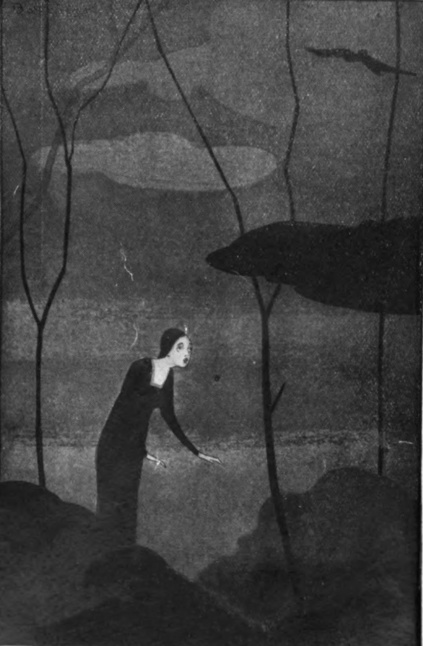11.4 Mysteries, the Macabre, the Supernatural, and the Uncanny
Francesco Goya, “The Sleep of Reasons Produces Monsters,” 1799, Metropolitan Museum of Art, New York City.
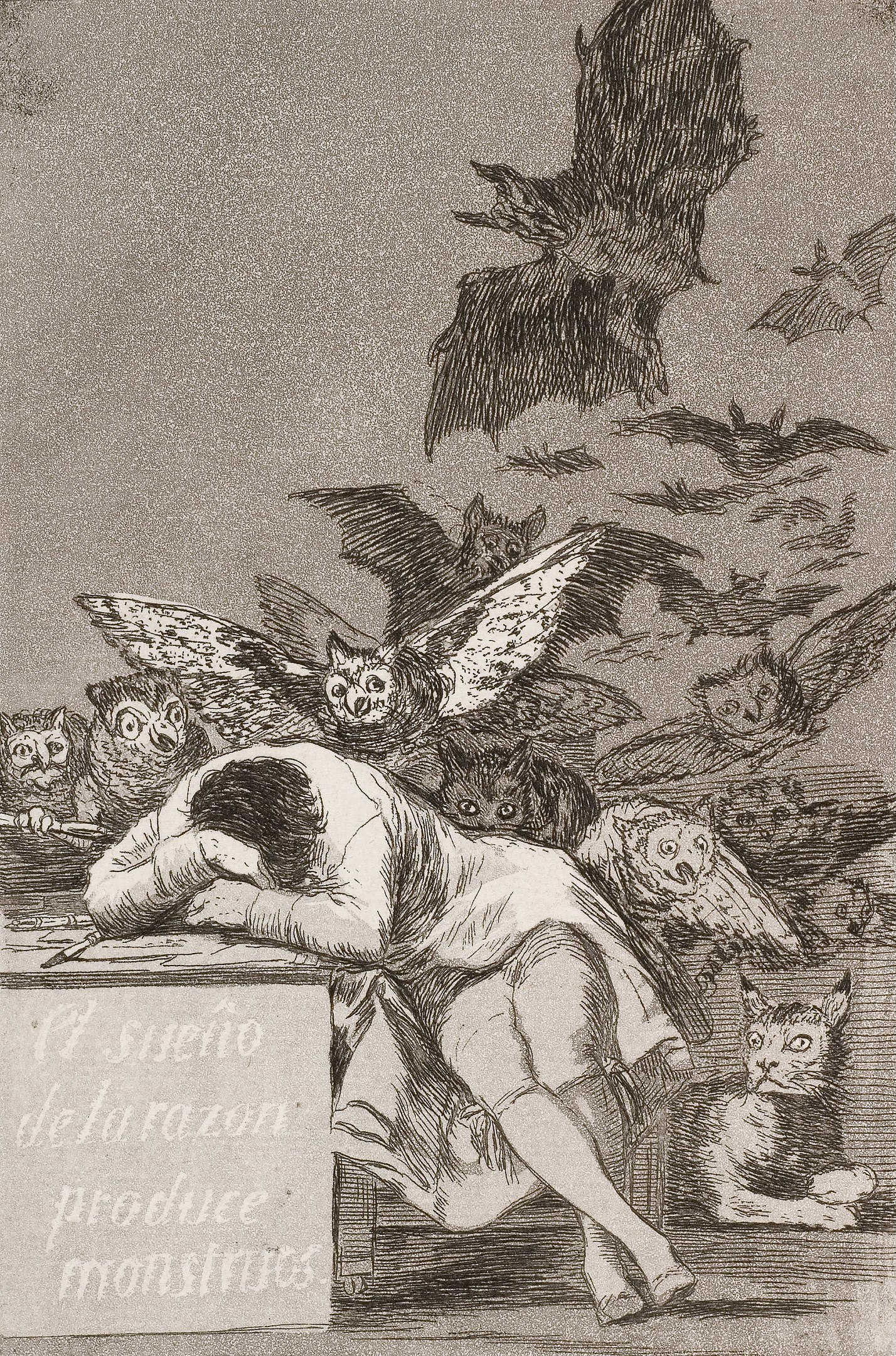
Courtesy: By Francisco de Goya – FAF4YL0zP9cjHg at Google Cultural Institute maximum zoom level, Public Domain, https://commons.wikimedia.org/w/index.php?curid=21982951
Selected Stories by Edgar Allen Poe and Related Images
The macabre and supernatural tales of Edgar Allen Poe (1809-1849) redefined the modern supernatural and horror short story genre. Classic stories like “The Cask of Amontillado” and “The Telltale Heart” can also be studied as complex psychological tales where the characters’ motives and unconscious thoughts reveal deeply disturbed and destructive impulses. A world of mystery, crime, the nature of evil, and the world of the uncanny and the supernatural recurring themes in Poe’s writing.Poe wrote his tales before the “science” of Freudian psychoanalysis and Jungian analytic personality psychology were gaining popularity. Poe wrote that his own dreams and nightmares were the source for some of his most famous tales. In “The Telltale Heart” a young man becomes abnormally preoccupied with the “evil eye” of the old man that he has been taking care of. Poe is able to create suspense and terror while detailing the narrator’s psychological descent into paranoia. The narrator’s consciences catches him in the end….Many innovative artists such as Harry Clark, Arthur Rackham, and Odilon Redon provided the illustrated for Poe’s Tales of Mystery and the Uncanny. Their illustrations reveal the chaotic and disturbed world that Poe’s characters inhabit. To read more about the haunting power of Edgar Allen Poe, please open the link here and to learn about the Poe Museum in Richmond, Virginia please open the link here
Metropolitan Museum of Art Note
“This is the best known image from Goya’s series of 80 aquatint etchings published in 1799 known as ‘Los Caprichos’ that are generally understood as the artist’s criticism of the society in which he lived. Goya worked on the series from around 1796-98 and many drawings for the prints survive. The inscription on the preparatory drawing for this print, now in the Prado Museum in Madrid, indicates that it was originally intended as the title page to the series. In the published edition, this print became plate 43, the number we can see in the top right corner. Nevertheless, it has come to symbolise the overall meaning of the series, what happens when reason is absent. Various animals including bats and owls fly above the sleeping artist, and at the lower right a lynx watches vigilantly alerting us to the rise of monstrous forces that we are able to control when sleep descends.”

Courtesy: By Henry Fuseli – This file was derived from: John Henry Fuseli – The Nightmare.JPG:, Public Domain, https://commons.wikimedia.org/w/index.php?curid=83606139
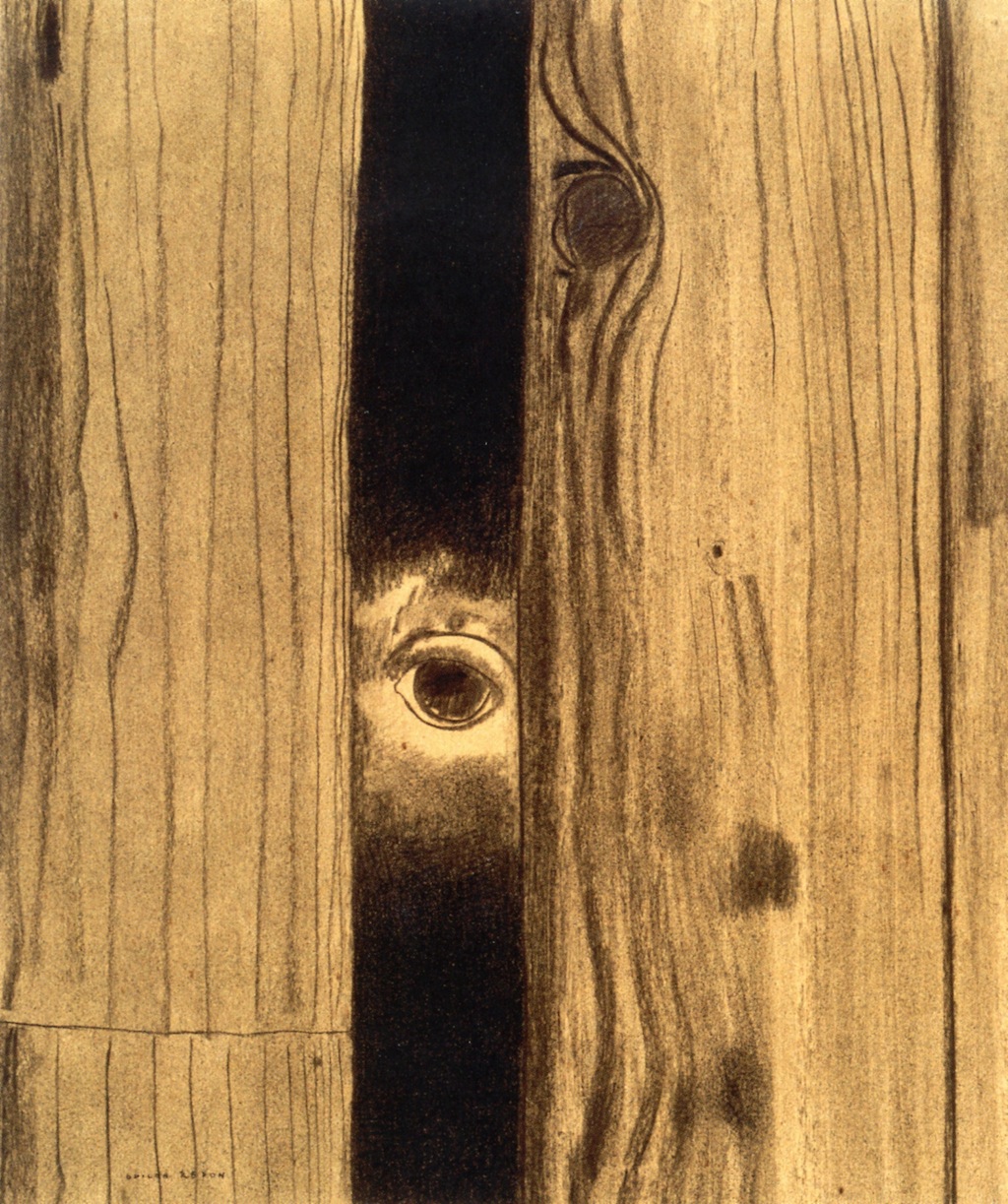
Courtesy: By Odilon Redon – 1. gallerix.ru2. The Athenaeum: Home – info – pic, Public Domain, https://commons.wikimedia.org/w/index.php?curid=17982414
Excerpt from “The Tell Tale Heart” by Edgar Allen Poe:
“True!—nervous—-very, very, dreadfully nervous I had been and am; but why will you say that I am mad? The disease had sharpened my senses—-not destroyed—not dulled them. Above all was the snese of hearing acute. I heard all things in the heaven and in the earth. I heard many things in hell. How, then, am I mad? Hearken! And observe how healthily—how calmly I can tell you the whole story.
It is impossible to say how first the idea entered my brain; but once conceive, it haunted me day ad night. Object there was none. Passion there was none. I loved the old man. He had never wronged me. He had never given me insult. For his gold I had no desire. I think it was his eye! Yes, it was this! He had the eye f a vulture—a pale blue eye, with a film over it. Whenever it fell upon me, my blood ran cold; and so by degrees—very gradually—I made up my mind to take the life of the old man, and thus rid myself of the eye forever” (p.290).
From. Edgar Allen Poe’s “The Telltale Heart” in Van Doren Stern, P. (Ed.). The portable Poe. Penguin Books (290-296).
The Complete Works of Edgar Allen Poe can be found here.
For teaching resources from the Poe Museum (Richmond, Virginia) please open the link here
and here.
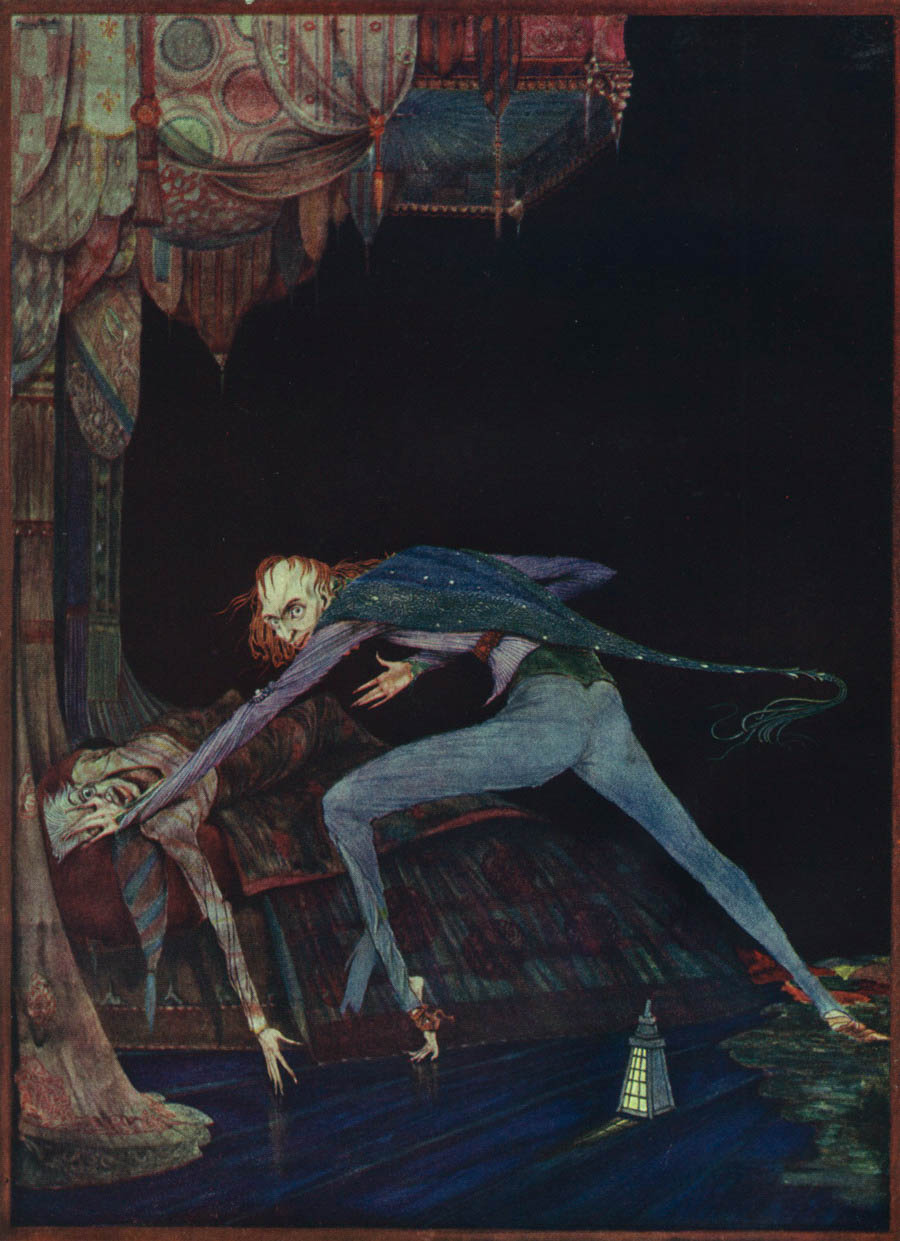
Courtesy: By Harry Clarke – Printed in Edgar Allan Poe’s Tales of Mystery and Imagination, 1919., Public Domain, https://commons.wikimedia.org/w/index.php?curid=2550014
For more information about the artist Harry Clark please open the links below.
Harry Clarke (17 March 1889 – 6 January 1931) was an Irish stained-glass artist and book illustrator. Born in Dublin, Clark was a leading figure in the Irish Arts and Crafts Movement. He illustrated The Telltale Heart, 1919. Printed in Edgar Allan Poe’s Tales of Mystery and Imagination (1839).
To view more illustrations by Harry Clarke please open the link here.
For more information please open the links here
and for teaching resources for “A Tell Tale Heart” please open the link here.
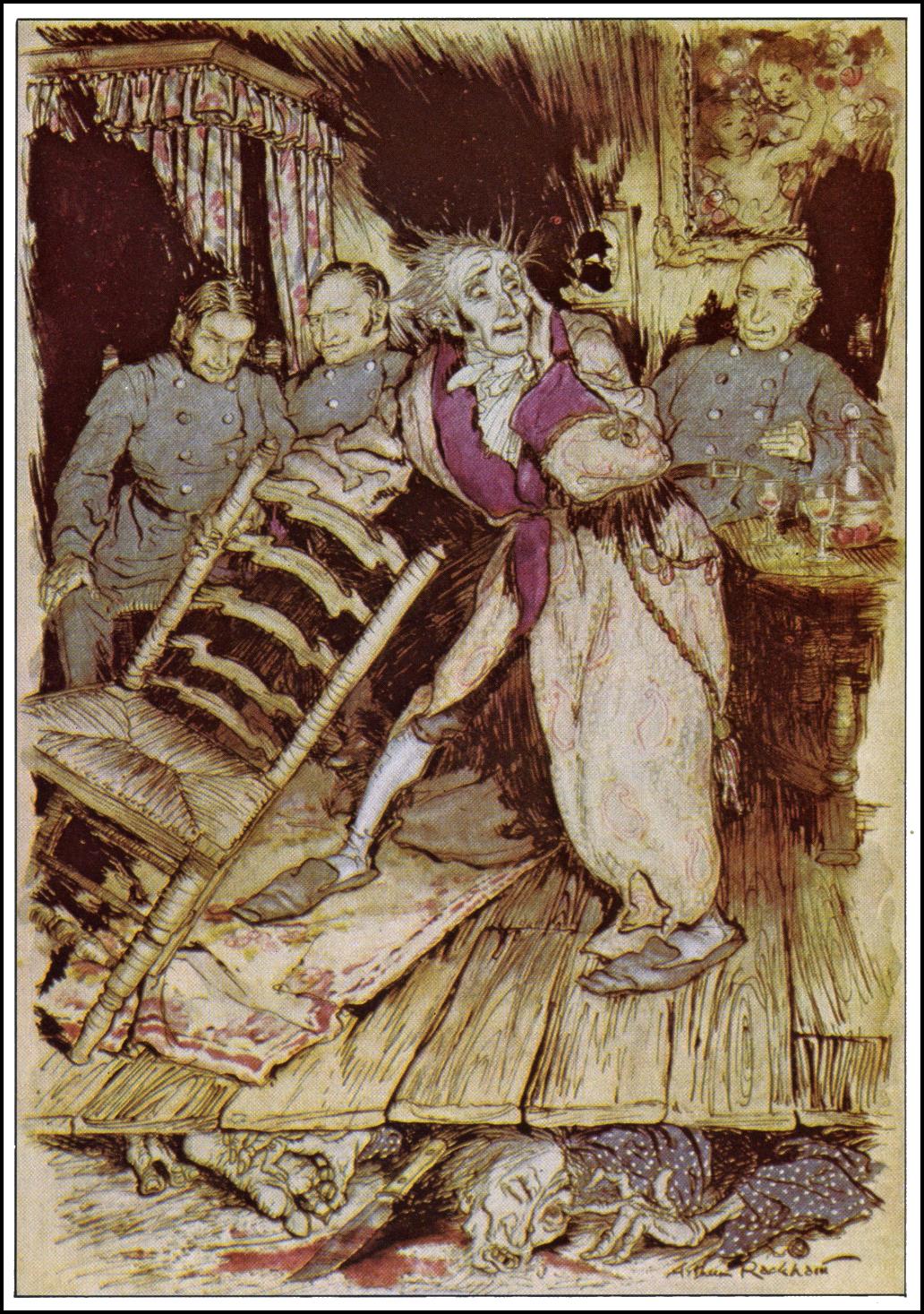
Courtesy: By Arthur Rackham – “Poe’s Tales of Mystery and Imagination” (1935) Illustrated by Arthur Rackham, Public Domain, https://commons.wikimedia.org/w/index.php?curid=22123163
For more examples of Arthur Rackham’s illustrations of Poe’s Tales of Mystery and Imagination please open the link here.
Related Stories of Horror, the Supernatural, and the Uncanny
Related Stories of the Supernatural and the Uncanny (Provide some brief summaries and perhaps include a few quotations)

Courtesy: By William Julian-Damazy (drawings), Georges Lemoine (engraving) – This file comes from Gallica Digital Library and is available under the digital ID bpt6k9923506/f7, Public Domain, https://commons.wikimedia.org/w/index.php?curid=24575153
Excerpt from “Le Horla” by Guy de Maupassant (1887)
Diary Entry:
12 May.
“May 12th. I have had a slight feverish attack for the last few days, and I feel ill, or rather I feel low-spirited. Whence do these mysterious influences come, which change our happiness into discouragement, and our self-confidence into diffidence? One might almost say that the air, the invisible air is full of unknowable Forces, whose mysterious presence we have to endure. I wake up in the best spirits, with an inclination to sing in my throat. Why? I go down by the side of the water, and suddenly, after walking a short distance, I return home wretched, as if some misfortune were awaiting me there. Why? Is it a cold shiver which, passing over my skin, has upset my nerves and given me low spirits? Is it the form of the clouds, or the color of the sky, or the color of the surrounding objects which is so changeable, which have troubled my thoughts as they passed before my eyes? Who can tell? Everything that surrounds us, everything that we see without looking at it, everything that we touch without knowing it, everything that we handle without feeling it, all that we meet without clearly distinguishing it, has a rapid, surprising and inexplicable effect upon us and upon our organs, and through them on our ideas and on our heart itself.
How profound that mystery of the Invisible is! We cannot fathom it with our miserable senses, with our eyes which are unable to perceive what is either too small or too great, too near to, or too far from us; neither the inhabitants of a star nor of a drop of water … with our ears that deceive us, for they transmit to us the vibrations of the air in sonorous notes. They are fairies who work the miracle of changing that movement into noise, and by that metamorphosis give birth to music, which makes the mute agitation of nature musical … with our sense of smell which is smaller than that of a dog … with our sense of taste which can scarcely distinguish the age of a wine! Oh! If we only had other organs which would work other miracles in our favor, what a number of fresh things we might discover around us.”
To read the complete text of “Le Horla” by Guy de Maupassant please open the link here.
For more information about “Le Horla” please open the link here
Exploring Setting (Excerpt from “The Monkey’s Paw” by W.W. Jacobs (1863-1943))
“Without, the night was cold and wet, but in the small parlour of Laburnam Villa the blinds were drawn and the fire burned brightly. Father and son were at chess, the former, who possessed ideas about the game involving radical changes, putting his king into such sharp and unnecessary perils that it even provoked comment from the white-haired old lady knitting placidly by the fire.
“Hark at the wind,” said Mr. White, who, having seen a fatal mistake after it was too late, was amiably desirous of preventing his son from seeing it.
“I’m listening,” said the latter, grimly surveying the board as he stretched out his hand. “Check.”
“I should hardly think that he’d come to-night,” said his father, with his hand poised over the board.
“Mate,” replied the son.
“That’s the worst of living so far out,” bawled Mr. White, with sudden and unlooked-for violence; “of all the beastly, slushy, out-of-the-way places to live in, this is the worst. Pathway’s a bog, and the road’s a torrent. I don’t know what people are thinking about. I suppose because only two houses in the road are let, they think it doesn’t matter.”
“Never mind, dear,” said his wife, soothingly; “perhaps you’ll win the next one.”
Retrieved Project Gutenberg “The Monkey’s Paw” from The Lady of the Barge and other Stories. The link can be found here
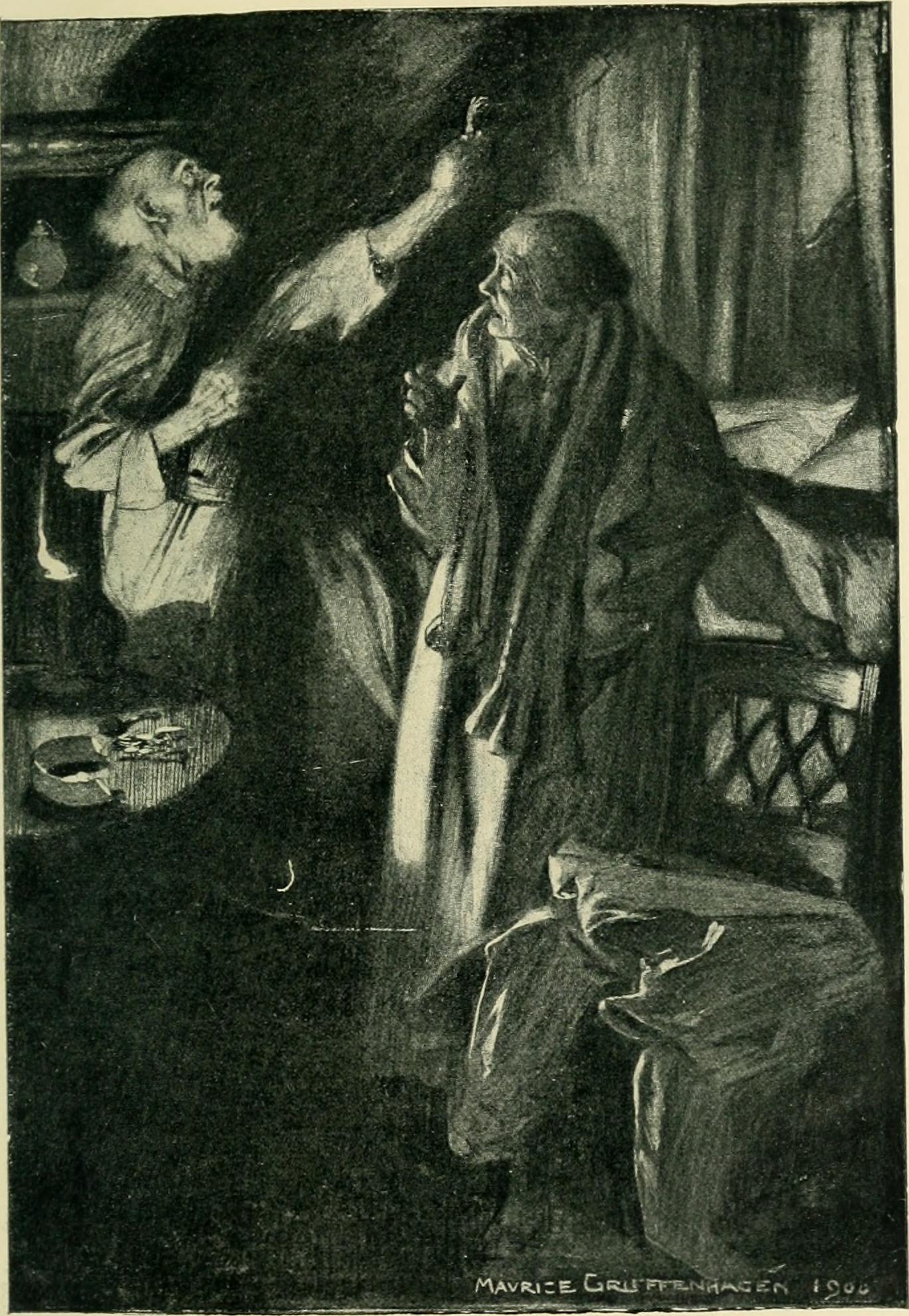
Appearance Contrasts with Reality
In D. H. Lawrence’s story of the uncanny and supernatural, a beautiful woman and her husband are living beyond their means to “keep up appearances” of being affluent. In reality, the woman is overwhelmed by insecurity, failure, an unspoken anxiety that she “has no luck.” Her son Paul senses this anxiety and desperately tries to help his mother. The house seemed haunted with a whispering of “there must be more money.” Paul develops an uncanny ability to predict the winning horses at the local race track; his “luck” is tied to a rocking horse that seems to be possessed.
“The Rockinghorse Winner” by D.H. Lawrence (1885-1930) Excerpt
“There was a woman who was beautiful, who started with all the advantages, yet she had no luck. She married for love, and the love turned to dust. She had bonny children, yet she felt they had been thrust upon her, and she could not love them. They looked at her coldly, as if they were finding fault with her. And hurriedly she felt she must cover up some fault in herself. Yet what it was that she must cover up she never knew. Nevertheless, when her children were present, she always felt the centre of her heart go hard. This troubled her, and in her manner she was all the more gentle and anxious for her children, as if she loved them very much. Only she herself knew that at the centre of her heart was a hard little place that could not feel love, no, not for anybody. Everybody else said of her: “She is such a good mother. She adores her children.” Only she herself, and her children themselves, knew it was not so. They read it in each other’s eyes.
There were a boy and two little girls. They lived in a pleasant house, with a garden, and they had discreet servants, and felt themselves superior to anyone in the neighbourhood.
Although they lived in style, they felt always an anxiety in the house. There was never enough money. The mother had a small income, and the father had a small income, but not nearly enough for the social position which they had to keep up. The father went into town to some office. But though he had good prospects, these prospects never materialised. There was always the grinding sense of the shortage of money, though the style was always kept up. …”
At last the mother said: “I will see if I can’t make something.” But she did not know where to begin. She racked her brains, and tried this thing and the other, but could not find anything successful. The failure made deep lines come into her face. Her children were growing up, they would have to go to school. There must be more money, there must be more money. The father, who was always very handsome and expensive in his tastes, seemed as if he never would be able to do anything worth doing. And the mother, who had a great belief in herself, did not succeed any better, and her tastes were just as expensive.
And so the house came to be haunted by the unspoken phrase: There must be more money! There must be more money! The children could hear it all the time though nobody said it aloud.” (p.1)
To read the complete story, please open the link here.
For more information about the story please open the link here.
Project Gutenberg eBook of Collected Works by D. H. Lawrence can be found here.

Additional Stories of Mystery, the Uncanny, and the Supernatural
“The Token” by May Sinclair (1863-1946)
“The Most Dangerous Game” by Richard Connell (1893-1949)
“The Open Window” by H.H. Munroe (Saki) (1870-1916).
“The Haunting of Hill House” by Shirley Jackson.
Fantasy and Otherworldly Landscapes
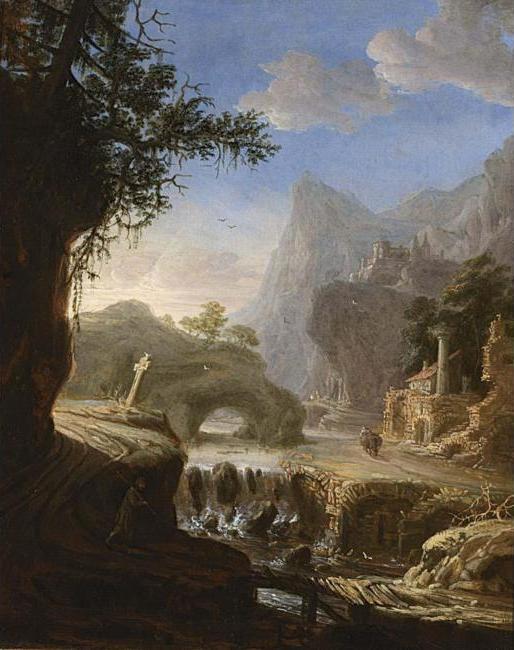
Courtesy: By Pieter Fris – Sotheby’s, Public Domain, https://commons.wikimedia.org/w/index.php?curid=12137598
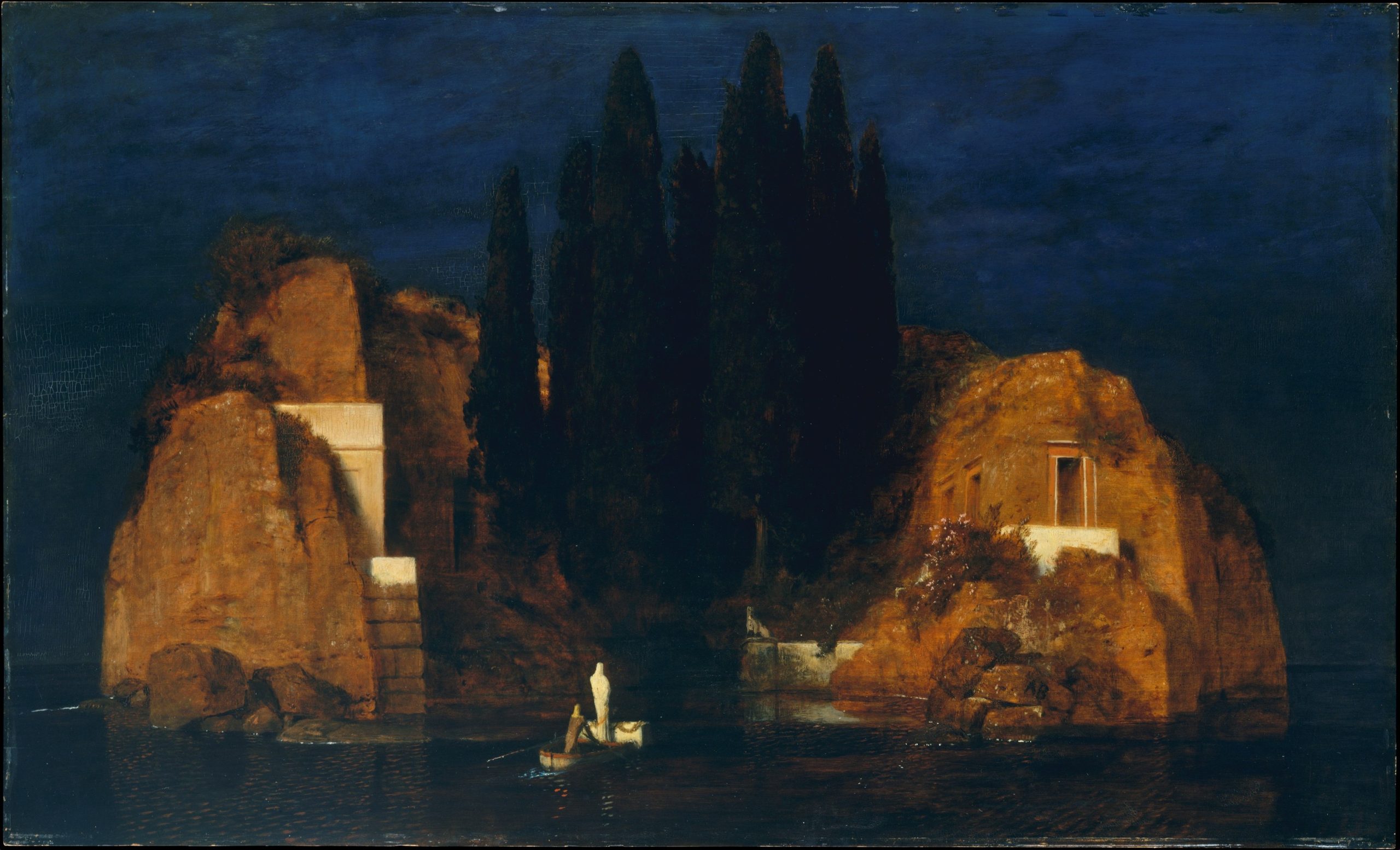
Courtesy: Reisinger Fund, 1926. “https://www.metmuseum.org/art/collection/search/435683” is licensed under CC0 1.0.
Metropolitan Museum of Art Notes:
“ Böcklin’s patron Marie Berna commissioned this painting in 1880 as a memorial to her late husband. It is based on an unfinished canvas that she saw in the artist’s studio in Florence; at her request, he added the draped coffin and the shrouded figure to the rowboat in the foreground. Böcklin later wrote to her, “you will be able to dream yourself into the world of dark shadows.” Between 1883 and 1886, he painted three additional versions of the subject, each slightly different. The scene was widely reproduced and inspired numerous artists, including the composer Sergei Rachmaninoff and the Surrealist painter Salvador Dalí.”
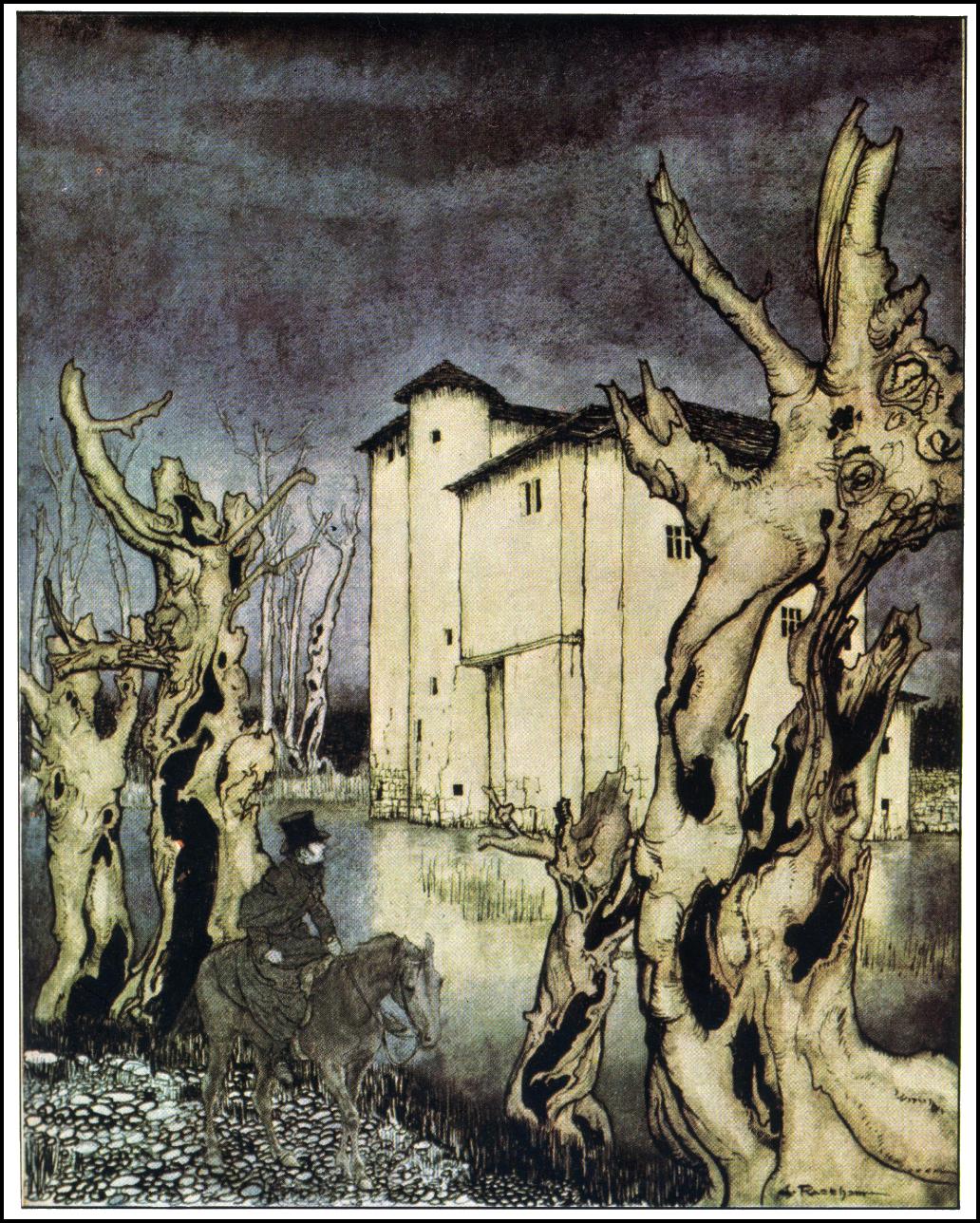
Courtesy: By Arthur Rackham – “Poe’s Tales of Mystery and Imagination” (1935) Illustrated by Arthur Rackham, Public Domain, https://commons.wikimedia.org/w/index.php?curid=22123445
For more illustrations of Poe’s Tales of Mystery and Imagination illustrated by Arthur Rackham please open the link below.
https://commons.wikimedia.org/wiki/Category:Tales_of_Mystery_and_Imagination_(Poe,_1935)
Creating Mood in Art and in Literature
The artist El Greco’s (Domḗnikos Theotokópoulos) (1541-1614) landscape “View of Toledo” creates an ominous setting, similar to the settings described in the short stories by Poe and other writers of the horror genre. In El Greco’s landscape of the Spanish city Toledo, the skies are dark, moody, and foreboding. The landscape could reflect El Greco’s state of mind and his views on the divine. Students can find a suitable image that evokes the mysterious and ominous setting of “The Monkey’s Paw.”

Courtesy: H. O. Havemeyer Collection, Bequest of Mrs. H. O. Havemeyer, 1929. “https://www.metmuseum.org/art/collection/search/436575” is licensed under CC0 1.0.
To read an essay describing “View of Toledo” by El Greco here.
“The Cask of Amontillado” (1846) by Edgar Allan Poe
Poe’s famous story of revenge is set in Venice at the height of the carnival (Carnevale Venezia) season where people wear elaborate masks to disguise their identity. The Venetian painter Francesco Guardi captures the beauty and mystery of this city in famous landscapes and figure paintings. In Poe’s 1846 story, the main character is the devious Venetian aristocrat Montresor. Feeling insulted by “a thousand injuries”at the hand of wine connoisseur Fortunato, he develops a murderous scheme to trap his “friend” Fortunato. Montresor “masks” his murderous intentions by luring Fortunato to the wine cellar of his Venetian palazzo where the precious “amontillado” is kept. Fortunato’s fate is sealed. Poe examines the psychological dynamics of revenge, vanity, hypocrisy, and vulnerability is his classic tale. Montressor shrewdly assesses his victim’s weaknesses and in so doing activates his plot that results in Fortunato’s demise.
Excerpt from “The Cask of Amontillado” by Edgar Allan Poe
“It must be understood that neither by word nor deed had I given Fortunato cause to doubt my good will. I continued, as was my want, to smile at his face, and he did not perceive that my smile now was at the thought of his immolation.
He had a weak point —this Fortunato—although in other regards he was a man to be respected and even feared. He prided himself on his connoisseurship in wine. Few Italians have the true virtuoso spirit. For the most part their enthusiasm is adopted to suit the time and opportunity, to practice imposture upon the British and Austrian millionaires. In painting and gemmary, Fortunato, like his countrymen, was a quack, but in the matter of old wines he was sincere. In this respect, I did not differ from him materially;—I was skilful in the Italian vintages myself, and brought largely whenever I could.
It was about dusk, one evening during the supreme madness of the carnival season, that I encountered my friend. He accosted me with excessive warmth, for he had been drinking much. The man wore motley. He had on a tight-fitting, parti-striped dress, and his head was surrounded by the conical cap and ells. I was so pleased to see him that I thought I should never have done wringing his hand.
I said to him—“My dear Fortunato, you are luckily met. How remarkable well you are looking today. But I have received a pipe of what passes for Amontillado and I have my doubts.”
“How?” said he. “Amontillado? A pipe? Impossible! And in the middle of the carnival!”
“Amontillado!”
“I have my doubts.”
“Amontillado!”
“And I must satisfy them….”
“Come, let us go.’
“Whither?”
“To your vaults…” (pp.309-310)
From: Edgar Allen Poe’s “The Cask of Amontillado” in Van Doren Stern, P. The Portable Poe. (1983). Viking (pp. 309-316).
To read “The Cask of Amontillado” and other stories by Edgar Allen Poe please open the link here.
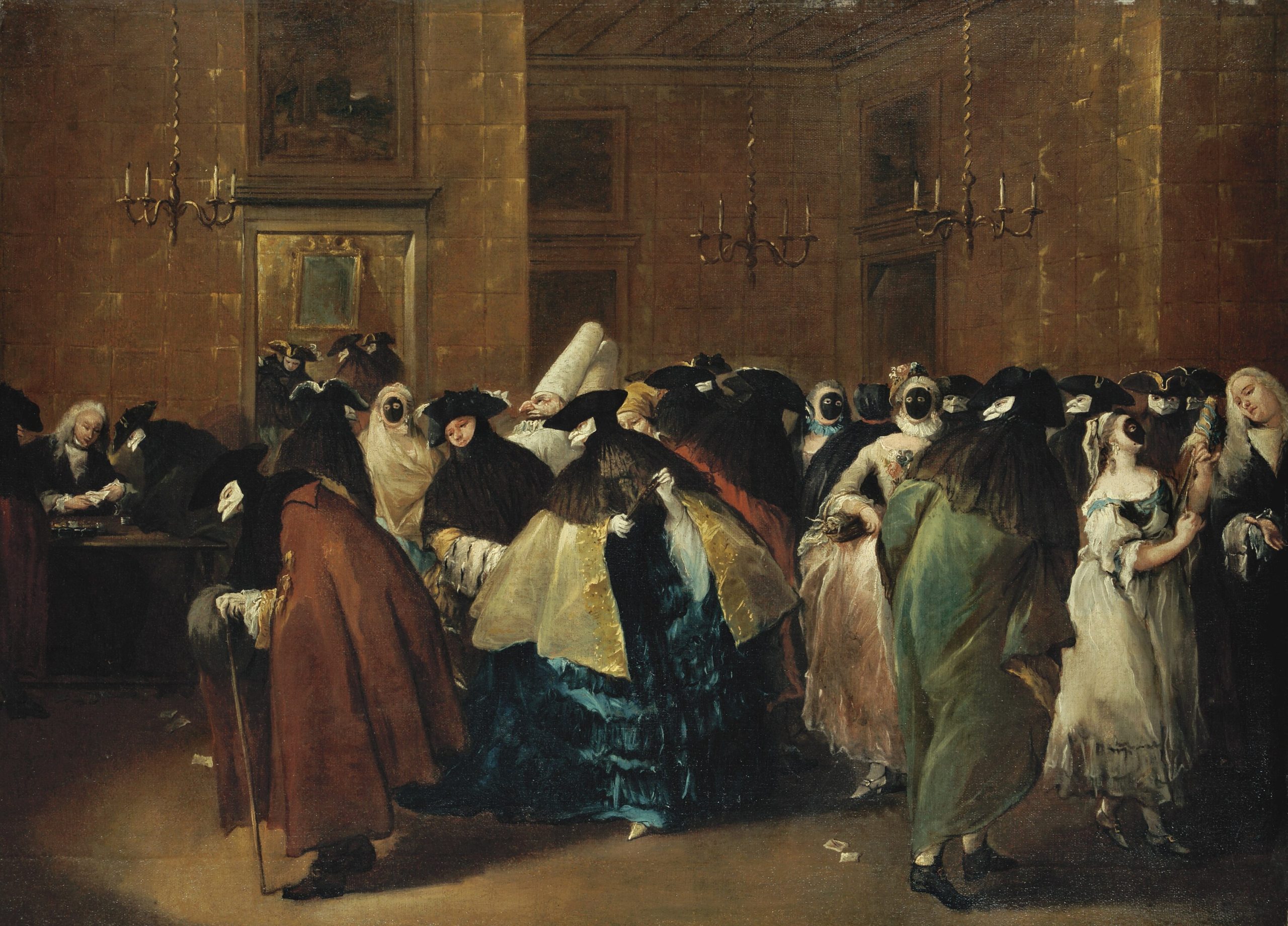
Courtesy: By Francesco Guardi – https://www.sothebys.com/en/search?query=guardi%20francesco&tab=objects, Public Domain, https://commons.wikimedia.org/w/index.php?curid=105647526
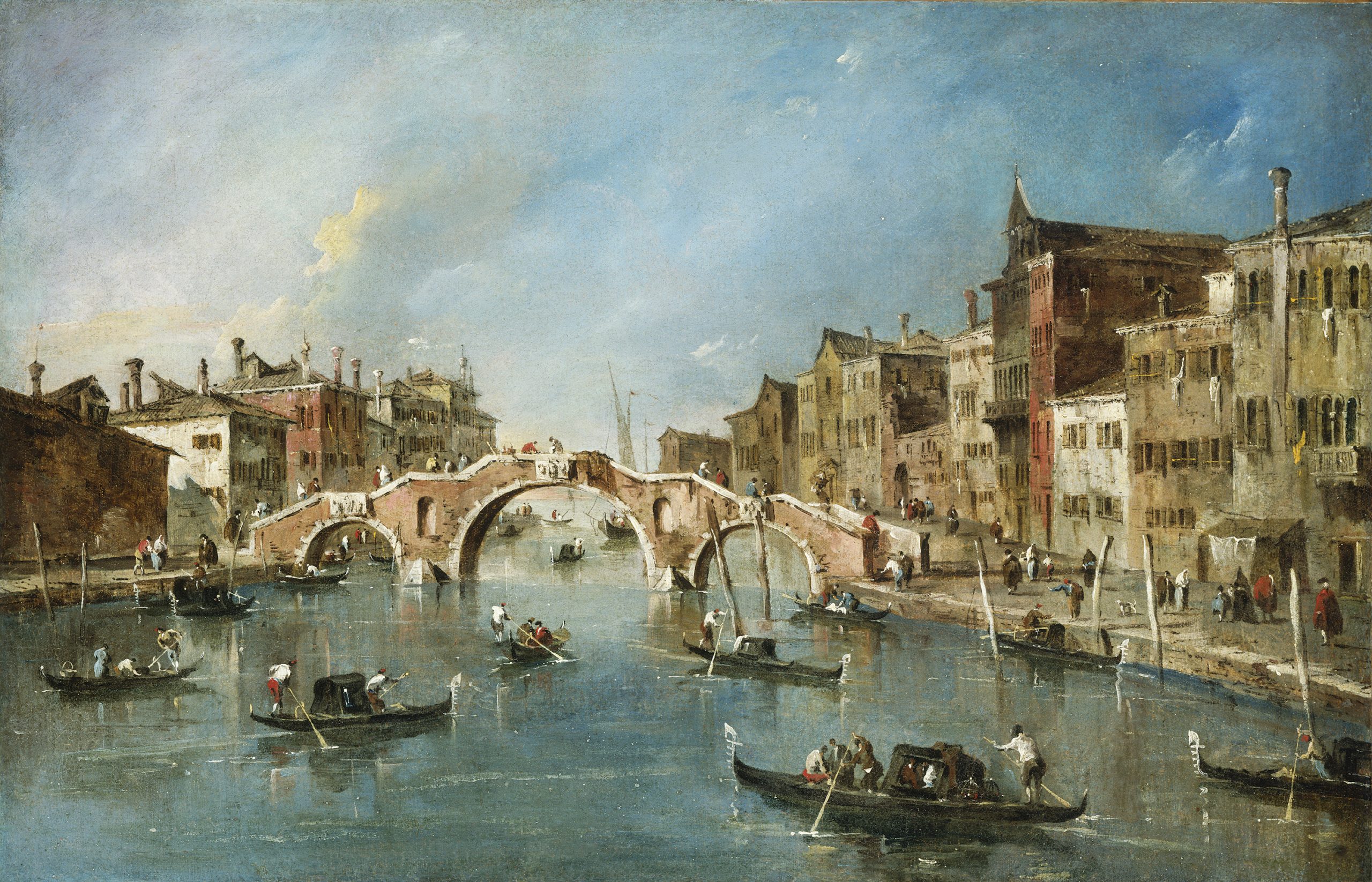
Courtesy: Samuel H. Kress Collection. “https://www.nga.gov/collection/art-object-page.254.html” is licensed under CC0 1.0.

